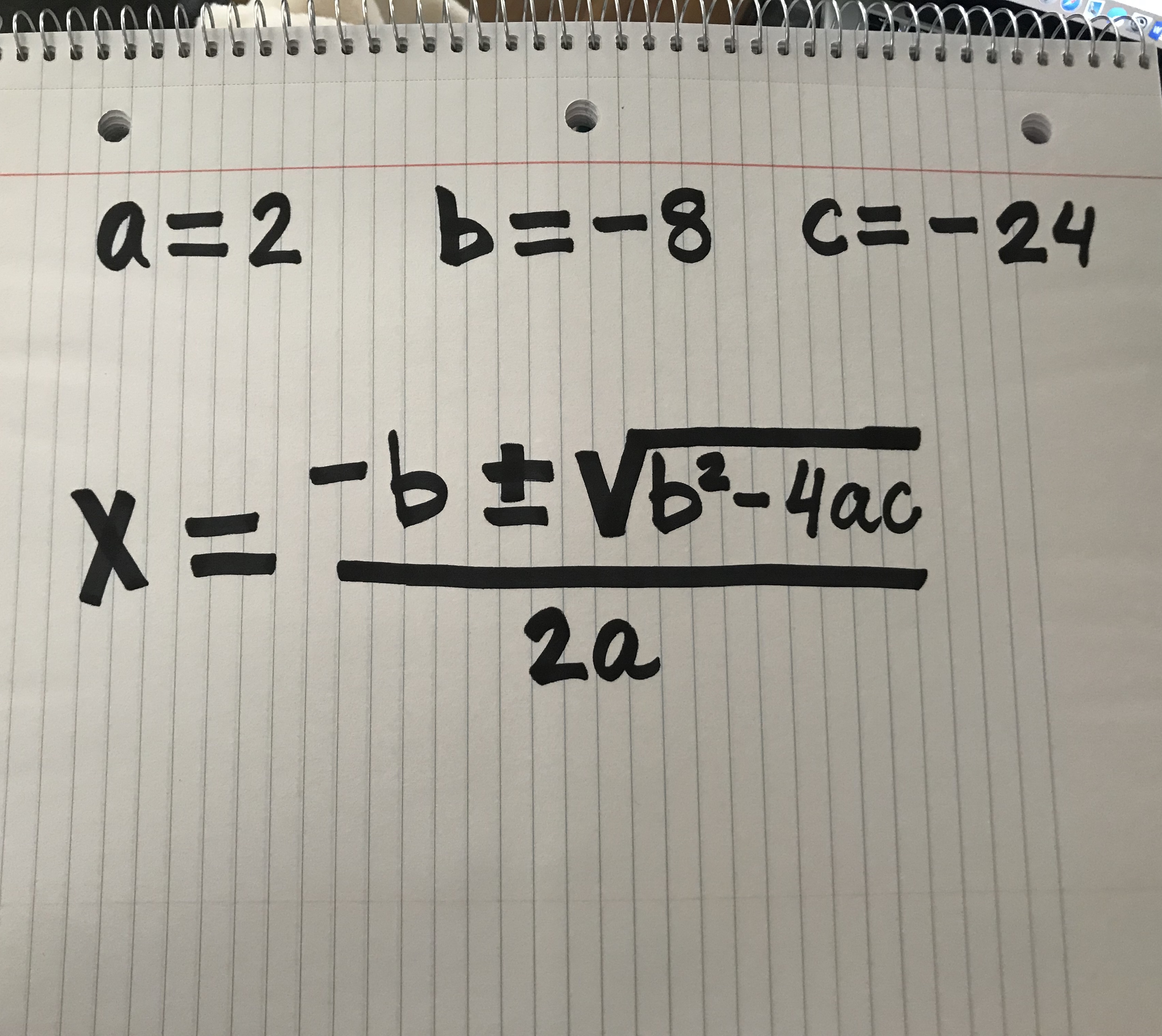Solving an Equation Using the Quadratic Formula
by erp42809 in Workshop > 3D Printing
1046 Views, 0 Favorites, 0 Comments
Solving an Equation Using the Quadratic Formula

To solve a quadratic equation you can use the quadratic formula in order to find the the two values of x where the equation is solved, or equals 0
Gather Supplies

You will need a piece of paper, a writing utensil, and an equation, which will be provided for you.
You may also use a basic calculator in order to perform simple math if necessary.
Identify Your Variables

Identify the values of a, b, and c in the given equation. (a) is the coefficient that is in front of the x squared term. (b) is the coefficient that is in front of the x term. (c) is the constant, or the number that is not paired with an x. Write out the a, b, and c values.
If there is no number in front of the x^2 or the x term then the value for a/b is 1. If there is no number at the end then the c value is 0.
Write the Formula

Write out the quadratic formula.
Plug In

Plug your a, b, and c values into the formula using parentheses to keep all your variables separate.
Insert the “a” value (2) where ever you see an “a.” Insert the “b” value (-8) where ever you see a “b.” Insert the “c” value (-24) where ever you see a “c.” If the variable is negative place the negative sign inside the parentheses.
Combine Terms

Begin to simplify the equation by combining the terms underneath the square root.
Simplify

Simplify the equation as much as possible by multiplying or taking the square root of the terms.
Write 2 Equations

Write two separate equations. The formulas will look exactly the same except one will have a plus sign (+) and one will have a minus sign (-) in place of the (+/-) symbol in the numerator.
Add and Subtract

Add the top two terms in the first equation and subtract the top two terms in the second.
Simplify

Simplify the fraction by dividing the top by the bottom.
Plug in Answers


Plug in the values that you got for x back into the original equation.
Check Your Work


Simplify the left side of the equation completely. If you did the problem right, you should end up with 0=0.